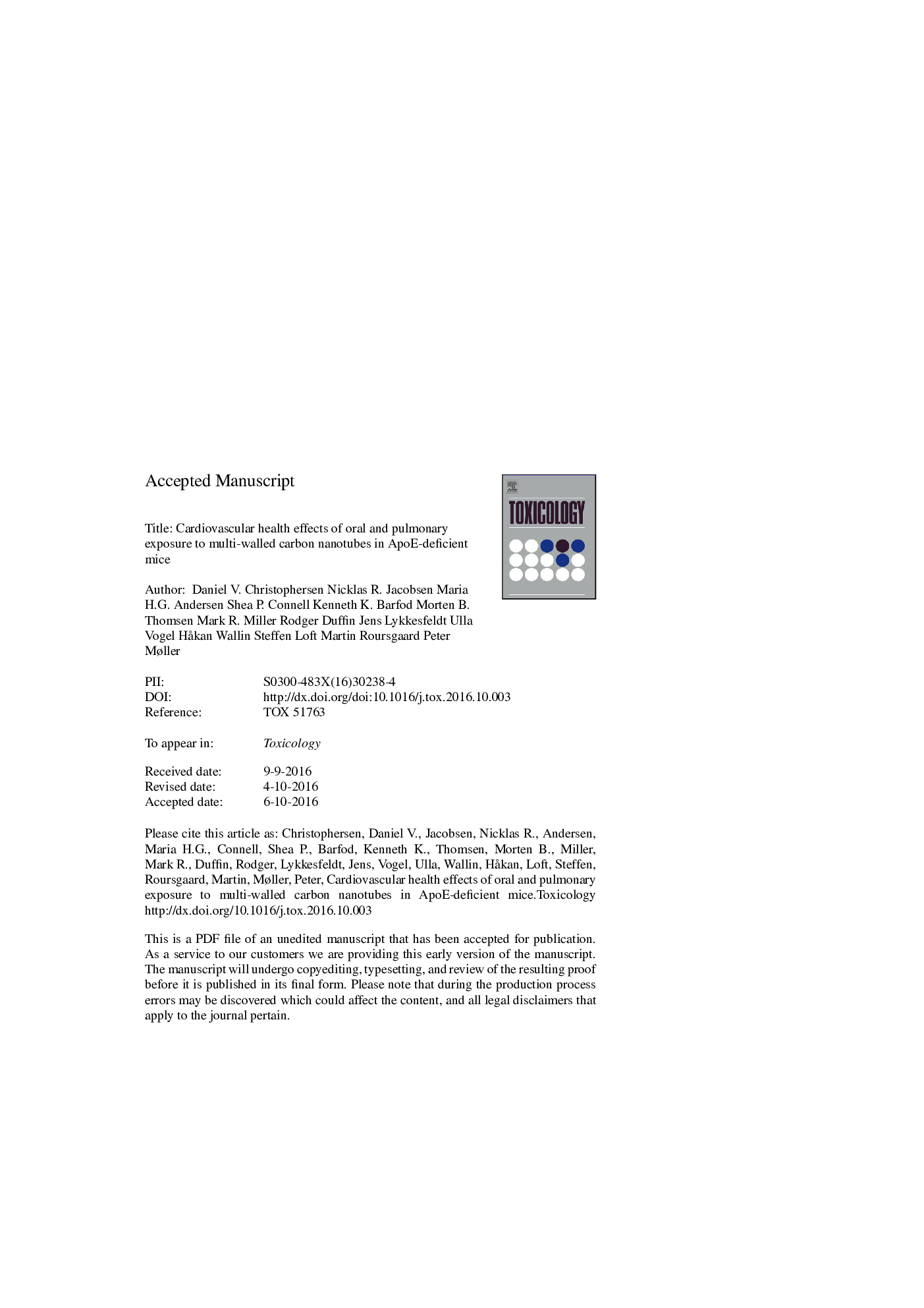| Article ID | Journal | Published Year | Pages | File Type |
|---|---|---|---|---|
| 5561922 | Toxicology | 2016 | 44 Pages |
Abstract
Exposure to high aspect ratio nanomaterials, such as multi-walled carbon nanotubes (MWCNTs) may be associated with increased risk of atherosclerosis, pulmonary disease, and cancer. In the present study, we investigated the cardiovascular and pulmonary health effects of 10 weeks of repeated oral or pulmonary exposures to MWCNTs (4 or 40 μg each week) in Apolipoprotein E-deficient (ApoEâ/â) mice fed a Western-type diet. Intratracheal instillation of MWCNTs was associated with oxidative damage to DNA in lung tissue and elevated levels of lipid peroxidation products in plasma, whereas the exposure only caused a modest pulmonary inflammation in terms of increased numbers of lymphocytes in bronchoalveolar lavage fluid. Ultrasound imaging in live animals revealed an increase in the inner and outer wall thickness of the aortic arch at 10 weeks after pulmonary exposure to MWCNTs, which may suggest artery remodelling. However, we did not find accelerated plaque progression in the aorta or the brachiocephalic artery by histopathology. Furthermore, repeated oral exposure to MWCNTs did not cause changes in the composition of gut microbiota of exposed mice. Collectively, this study indicates that repeated pulmonary exposure to MWCNTs was associated with oxidative stress, whereas cardiovascular effects encompassed remodelling of the aorta wall.
Related Topics
Life Sciences
Environmental Science
Health, Toxicology and Mutagenesis
Authors
Daniel V. Christophersen, Nicklas R. Jacobsen, Maria H.G. Andersen, Shea P. Connell, Kenneth K. Barfod, Morten B. Thomsen, Mark R. Miller, Rodger Duffin, Jens Lykkesfeldt, Ulla Vogel, Håkan Wallin, Steffen Loft, Martin Roursgaard, Peter Møller,
